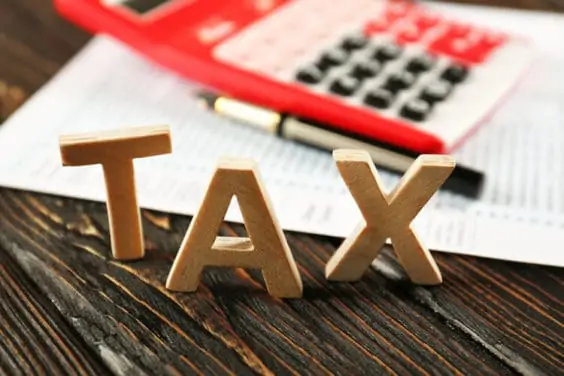The 2024 New Year will offer another opportunity for you to utilize your Tax-Free Savings Account (TFSA) and protect your investment income from taxation.
If you’re 18 years old and a resident of Canada, you are eligible to start accumulating TFSA contribution room. You can save or invest funds tax-free up to the maximum of your contribution room.
2024 TFSA Contribution Limit
For 2024, the annual TFSA limit will increase to $7,000 (up from $6,500 in 2023).
If you have been eligible to contribute to the TFSA since its inception in 2009, it means that in 2023, you had a total contribution room of $88,000, and for 2024, your contribution room will increase to $95,000.
Essentially, you can invest up to $95,000 upfront in 2024 and not have to pay taxes on the income earned from your investment.
The table below shows the annual TFSA contribution limits since 2009:
| Year | Contribution Limit | Cumulative Contribution Room |
| 2009 | $5,000 | $5,000 |
| 2010 | $5,000 | $10,000 |
| 2011 | $5,000 | $15,000 |
| 2012 | $5,000 | $20,000 |
| 2013 | $5,500 | $25,500 |
| 2014 | $5,500 | $31,000 |
| 2015 | $10,000 | $41,000 |
| 2016 | $5,500 | $46,500 |
| 2017 | $5,500 | $52,000 |
| 2018 | $5,500 | $57,500 |
| 2019 | $6,000 | $63,500 |
| 2020 | $6,000 | $69,500 |
| 2021 | $6,000 | $75,500 |
| 2022 | $6,000 | $81,500 |
| 2023 | $6,500 | $88,000 |
| 2024 | $7,000 | $95,000 |
Related: TFSA Over-Contribution Penalties
How the TFSA Annual Limit is Calculated
The TFSA annual dollar limit is calculated by indexing it to inflation and rounding it off to the nearest $500. The government determines the indexation factor for each year from the percentage change in the average Consumer Price Index (CPI) over the previous year.
For example, to compute the limit for 2009, we multiply $5,000 by the indexation factor of 0.6% (1.006) in use that year: $5,000 x 1.006 = $5,030. This result was then rounded off to $5,000.
For the 2019 TFSA limit, the indexation factor is 2.2%. As such, when we calculate the indexed TFSA limit for 2019 (i.e. $5,721 x 2.2%), we have $5,847, which is rounded off to $6,000.
For the 2020 TFSA limit, the indexation factor is 1.90%. When you compute the indexed TFSA limit for 2020 (i.e. $5,847 x 1.9%), you get $5,958, which explains why the TFSA annual limit remains at $6,000.
For the 2021 TFSA limit, the indexation factor is 1.0%. As such, when we calculate the indexed TFSA limit for 2021 (i.e. $5,958 x 1.0%), we have $6,017.58 which is rounded down to $6,000.
For the 2022 TFSA limit, the indexation factor is 2.4%. When you calculate the indexed TFSA limit for 2022 (i.e. $6,017.58 x 2.4%), you get $6,162, which is then rounded down to $6,000.
Using an indexation factor of 6.3%, the 2023 TFSA limit clocks in at just slightly more than $6,500, which is then rounded down to $6,500.
For the 2024 TFSA limit, the indexation factor is 4.7%, which brings the TFSA limit to $6,858, rounded up to $7,000.
| Year | TFSA Indexation Factor | Indexed TFSA Limit |
|---|---|---|
| 2009 | 0.60% | $5,030 |
| 2010 | 1.40% | $5,100 |
| 2011 | 2.80% | $5,243 |
| 2012 | 2.00% | $5,348 |
| 2013 | 0.90% | $5,396 |
| 2014 | 1.70% | $5,488 |
| 2015* | 1.30% | $5,559 |
| 2016 | 1.40% | $5,637 |
| 2017 | 1.50% | $5,721 |
| 2018 | 2.20% | $5,847 |
| 2019 | 1.90% | $5,958 |
| 2020 | 1.00% | $6,017 |
| 2021 | 2.40% | $6,162 |
| 2022 | 6.30% | $6,550 |
| 2023 | 4.70% | $6,858 |
*Inflation-adjustment was cancelled for 2015 and the annual limit was pegged at $10,000.
2024 TFSA Unused Contribution Room
If you’ve not contributed the maximum limit every year, it will accumulate, and you’ll have ‘unused’ TFSA contribution room. Unused contribution room can be carried forward indefinitely.
Also, if you withdraw funds from your TFSA in any particular year, the amount withdrawn can be re-contributed in the following year.
To calculate your total contribution for 2024:
- TFSA limit for 2024 ($7,000), plus
- Unused contribution room for 2023, plus
- Withdrawals made in 2023.
TFSA Contribution Room Example
Let’s say Jane became eligible for the TFSA in 2022; however, she could not make any contributions until the following year, in January 2023, when she contributed $8,000. In September 2023, she withdrew $3,000 from her TFSA for an emergency. What is her total contribution room for 2024?
Answer:
- contribution limit for 2022 = $6,000
- + contribution limit for 2023 = $6,500
- – contribution made in 2023 = $8,000
- + withdrawal made in 2023 = $3,000
- + contribution limit for 2024 = $7,000
- Total TFSA Room for 2023 = $14,500
For 2023, Jane has a total contribution room of $14,500.
If you’re confused about what your unused TFSA contribution room is, you can also find it on your Notice of Assessment or via My CRA Account.

TFSA Investment Options
Various investments can be held in a TFSA account, including stocks, mutual funds, ETFs, GICs, bonds, cash, etc. You can learn more about your options in the resources listed below:
- Best TFSA Investments
- Best TFSA Savings Accounts
- How To Buy Stocks in Canada
- Best TFSA GIC Rates in Canada
If you prefer a hands-off approach to investing your TFSA funds at a much lower fee than the average mutual fund, look at Canada’s Robo-Advisors. Robo-advisors use low-cost ETFs to build your portfolio and charge a small management fee.
Wealthsimple Invest

Professionally managed ETF portfolios
Multiple account types
Auto rebalancing and div reinvesting
Get a $25 bonus with a $500 deposit
TFSA Penalties
There are penalties for running afoul of CRA rules relating to your account. Some non-compliances that result in penalties include:
- Over-contributing to your TFSA
- Investing in non-qualified or prohibited investments inside your TFSA
- Contributing to a TFSA while you’re deemed a non-resident of Canada
The most common offence is when people over-contribute to their TFSA either deliberately or because they’ve misunderstood the withdrawal and re-contribution rules.
Over-contribution results in “Excess” TFSA contribution, which is then levied a 1% penalty tax per calendar month until it’s removed.
Related:





@Steve. Exactly- And your points on how TFSA’s can be beneficial to prevent OAS clawbacks and minimize taxes in retirement are spot on!
Hi Enoch!
This was a fun read. You did a great job at explaining the TFSA!
I love love love the TFSA! It’s one of the best saving and investing tools that Canadians can take advantage of.
The only thing is that it’s too flexible and I know my friends who would just treat it like a checking account — just take the money out to spend on random things but never put it back (even though they swear that they would) haha!
Otherwise it’s awesome for those who are disciplined. ?
@Finsavvy – Yes, the TFSA is very flexible and that definitely has its pros and cons. Thanks for stopping by!
Thanks for sharing this info. it’s really nice.
Hmmm, not that I’m a space cadet or anything but I have no idea how much I’ve contrib used over the years… is there any way to find out?
Yes, you can create a myCRA account and they have a tracker there:
https://www.canada.ca/en/revenue-agency/services/e-services/e-services-individuals/mycra.html
Is the government considering a lifetime limit for contributions or will the present 2020 limit increase yearly by inflation?
@Iverson: As far as we know, the TFSA annual limit will continue to increase with inflation…rounded off to the nearest $500. This may change in the future though when we start having a ton of people with $1 million dollar TFSA accounts!
Thank you for this information. What is the maximum amount allowable within the TSFA based on investment gains?
@Maureen: There is no limit to the gains you can have on your TFSA account as long as you are not using it to carry out the “business” of day trading.
https://www.advisor.ca/tax/tax-news/clients-day-trading-in-their-tfsas-theyre-ultimately-liable-for-the-tax/